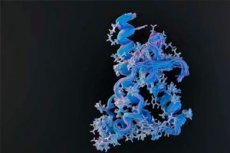New publications
Study shows chronic debilitating disease unlikely to pass from animals to humans
Last reviewed: 02.07.2025

All iLive content is medically reviewed or fact checked to ensure as much factual accuracy as possible.
We have strict sourcing guidelines and only link to reputable media sites, academic research institutions and, whenever possible, medically peer reviewed studies. Note that the numbers in parentheses ([1], [2], etc.) are clickable links to these studies.
If you feel that any of our content is inaccurate, out-of-date, or otherwise questionable, please select it and press Ctrl + Enter.

A new study of prion diseases using a human brain organoid model suggests that there is a significant species barrier preventing the transmission of chronic wasting disease (CWD) from deer, elk, and fallow deer to humans. The findings, by scientists at the National Institutes of Health (NIH) and published in the journal Emerging Infectious Diseases, are consistent with decades of similar studies in animal models conducted at NIH’s National Institute of Allergy and Infectious Diseases (NIAID).
Prion diseases are degenerative diseases found in some mammals. These diseases primarily involve the deterioration of the brain, but can also affect the eyes and other organs. Illness and death occur when abnormal proteins fold incorrectly, clump together, recruit other prion proteins to do the same, and eventually destroy the central nervous system. There are currently no preventive or therapeutic treatments for prion diseases.
CWD is a type of prion disease found in deer, which are popular game animals. Although CWD has never been detected in humans, the question of its potential transmission has lingered for decades: can people who eat meat from CWD-infected deer become ill with a prion disease? The question is important because another prion disease, bovine spongiform encephalopathy (BSE), or mad cow disease, emerged in the UK in the mid-1980s and mid-1990s. Cases have also been found in cattle in other countries, including the US.
Over the next decade, 178 people in the UK who were thought to have eaten BSE-contaminated meat became ill with a new form of prion disease in humans, variant Creutzfeldt-Jakob disease, and died. Researchers later determined that the disease had spread to cattle through feed contaminated with the infectious prion protein.
The disease's transmission from feed to cattle and humans has alarmed the UK and put the world on alert for other prion diseases transmitted from animals to humans, including CWD. CWD is the most transmissible of the prion family of diseases, demonstrating highly efficient transmission between deer.
Historically, scientists have used mice, hamsters, squirrel monkeys, and cynomolgus macaques to model prion diseases in humans, sometimes monitoring the animals for signs of CWD for more than a decade. In 2019, NIAID scientists at Rocky Mountain Laboratories in Hamilton, Montana, developed a human brain organoid model for Creutzfeldt-Jakob disease to evaluate potential treatments and study specific prion diseases in humans.
Human brain organoids are small spheres of human brain cells, ranging in size from a poppy seed to a pea. Scientists grow the organoids in dishes of human skin cells. The organization, structure, and electrical activity of brain organoids are similar to brain tissue. They are currently the closest laboratory model of the human brain available.
Because organoids can survive in a controlled environment for months, scientists use them to study diseases of the nervous system over time. Brain organoids have been used as models to study other diseases, such as Zika virus infection, Alzheimer's disease, and Down syndrome.
In the new CWD study, the bulk of which was conducted in 2022 and 2023, the research team tested the study model by successfully infecting human brain organoids with CJD prions (positive control). Then, under the same lab conditions, they directly exposed healthy human brain organoids to high concentrations of CWD prions from white-tailed deer, mule deer, elk, and normal brain tissue (negative control) for seven days. The researchers monitored the organoids for six months, and none became infected with CWD.
This suggests that even when human central nervous system tissue is directly exposed to CWD prions, there is significant resistance or barrier to spread of infection, according to the researchers. The authors acknowledge limitations of their study, including the possibility that a small number of people may have a genetic predisposition that was not accounted for, and that the emergence of new strains with a lower barrier to infection remains possible.
They are optimistic that the current study data suggests that people are extremely unlikely to develop a prion disease from accidentally eating CWD-infected deer meat.
